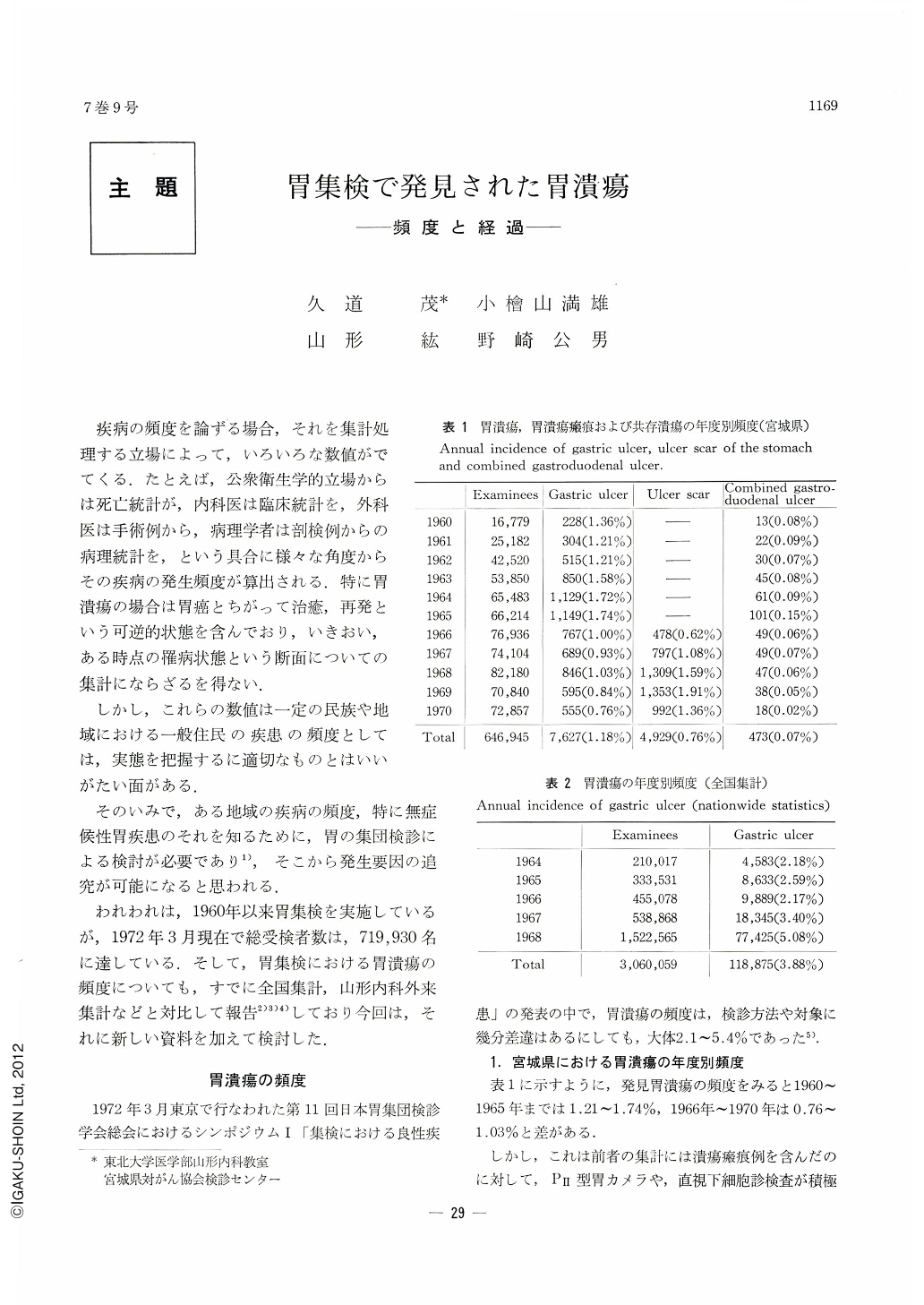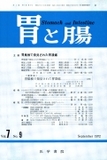Japanese
English
- 有料閲覧
- Abstract 文献概要
- 1ページ目 Look Inside
疾病の頻度を論ずる場合,それを集計処理する立場によって,いろいろな数値がでてくる.たとえば,公衆衛生学的立場からは死亡統計が,内科医は臨床統計を,外科医は手術例から,病理学者は剖検例からの病理統計を,という具合に様々な角度からその疾病の発生頻度が算出される.特に胃潰瘍の場合は胃癌とちがって治癒,再発という可逆的状態を含んでおり,いきおい,ある時点の罹病状態という断面についての集計にならざるを得ない.
しかし,これらの数値は一定の民族や地域における一般住民の疾患の頻度としては,実態を把握するに適切なものとはいいがたい面がある.
Incidence of a disease differs according as how it is collected and dealt with, and its evaluation for gastric ulcer based on mass survey embraces some problems in itself. However, mass survey is still indispensable to the collection of frequency in diseases in a certain area, especially when one has to evaluate a symptom-free disease. It should also be mentioned that, unlike cancer of the stomach, its ulcer is a disease in a reversible state from healing to recurrence or vice versa, so that its evaluation is only done at a certain phase of its course.
The symposium at the 11th General Meeting of Japanese Society for Gastric Mass Survey held in March 1972 showed that incidence of gastric ulcer in mass screening of the stomach ranged from 2.1 to 5.3 percent. Our results in Miyagi Prefecture showed only 1.95 percent, including ulcer scar. It is far lower than the average incidence of gastric ulcer (3.88 per cent) collected from mass surveys conducted on a nation-wide basis.
Since 1970, when six indirect exposures combined with Pa-type gastrocamera were employed, the incidence of ulcer in the upper segments of the stomach increased to about 1.6 times as compared with the results before then. Frequency in the male predominates female in a ratio of 4.6 : 1. Ulcer is most often found in persons above the ages 60-79 years, while a coexisting ulcer is most frequently seen in people in the thirties.
Of 2,180 patients followed up, 828 (38%) never underwent any medical treatment, while 227 (10.4%) had later surgical intervention. This figure is low as compared with other simillar reports. There were also 45 persons (2.06%) who were finally diagnosed as gastric cancer during the course of observation. We have a big problem here whether malignant change of ulcer was involved or cancer had been there from the outset. Those who died in the follow-up period account for 104 (4,8% ). Of these, death from ulcer was seen in 8 (0.39%). Our mortality rate is far lower than that of Takahashi who reported 2.3 per cent for it.

Copyright © 1972, Igaku-Shoin Ltd. All rights reserved.


